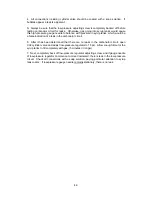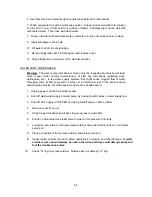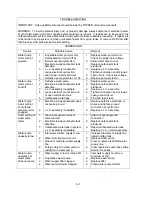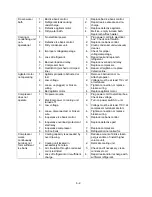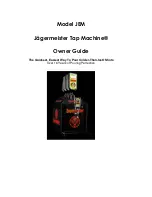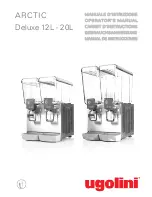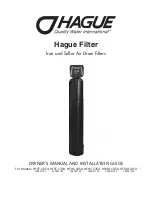
LUBRICATION
Water pump motors bearing must be oiled periodically. Refer to oiling instruction on motors. DO NO
OVER OIL.
SERVICING CHECK VALVES
It is not recommended to disassemble the check valves unless it is absolutely necessary. As
stated before this necessity would be prompted by earthquakes, disruption of water service, etc.
The symptoms of a malfunctioning check valve would be:
Water check valve
Carbonation through out water supply, i.e., basins,
toilets, etc. or an activated vent valve.
Gas check valve
Water in C02 cylinder, water escaping from high
pressure C02 regulator, (S-101), during cylinder
change and possibly water in syrup containers. If any
of the above symptoms occur proceed with the
following:
1. Disconnect water line from double check valve outlet. Remove double check from
water pump outlet fitting.
2. Remove one check valve from other, then disassemble each check valve as shown
in Figure 5-2.
3. Wipe each part with clean lint-free cloth. Inspect each part, especially the ball, for
burrs, nicks, corrosion, deterioration, and other damage. Discard ball “O”-ring, (S-
13), and any damaged or suspicious parts and replace with new parts during re-
assembly.
4. Reassemble each check valve as shown in Figure 5-2.
ALWAYS INSTALL NEW “O” RING, (S-13).
5. Assemble check valves together as shown in Figure 5-1.
6. Connect water inlet line to double check valve assembly.
7. Activate the system as outlined in CHAPTER III.
S-15
S-13
S-11
S-12
S-10
S-9
S-16
S-6
S-11
S-12
S-13
S-10
S-22 GAS CHECK
VALVE
S-9
S-20 WATER
CHECK VALVE
S-14
S13
S-11
S-12
S-10
S-9
S-6
FIGURE 5-2 CHECK VALVES
5-5










